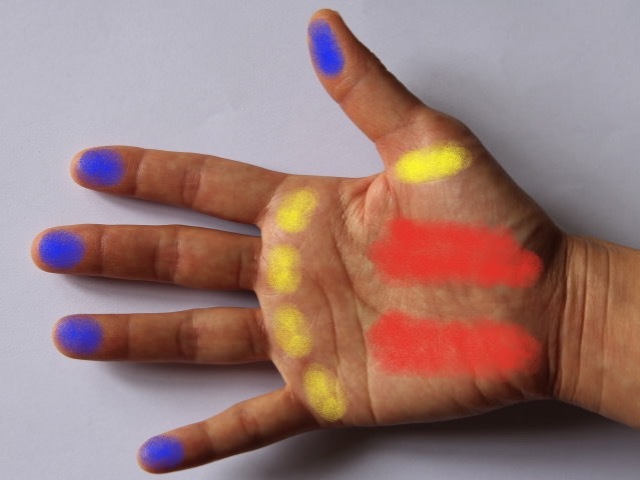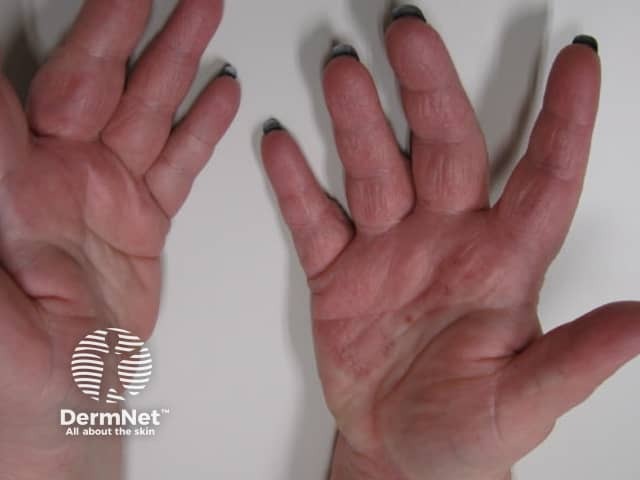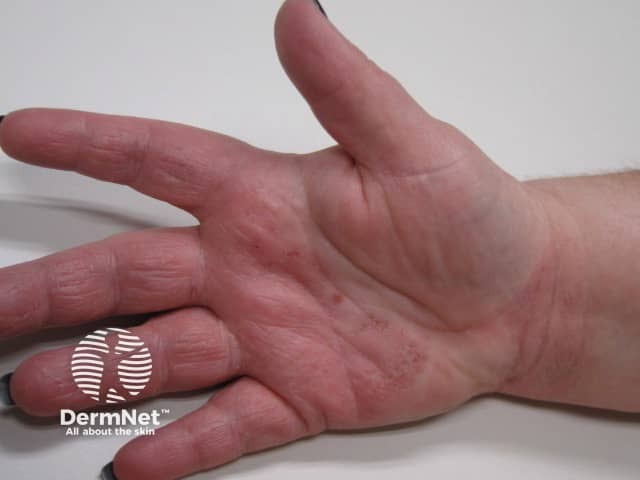Main menu
Common skin conditions

NEWS
Join DermNet PRO
Read more
Quick links
Computer mouse dermatitis is a contact dermatitis of the hand caused by irritants and/or allergens associated with the use of a computer mouse or mouse pad.
Irritant contact dermatitisis the most common form of computer mouse dermatitis. It presents as a dry red scaling rash or as thickened and slightly pigmented rash at the base of the palm or on the fingertips. Callus formation on the wrist and hand may also be seen. Irritants associated with computer mouse use include sweating, friction and pressure generally in association with prolonged periods on the computer (frictional lichenified dermatitis).
Allergic contact dermatitis is less common. Allergic contact dermatitis is caused by specific allergic reaction to a component in the computer mouse or mouse pad.
The cause of computer mouse dermatitis is often a result of prolonged contact or exposure, ie typically the individual spends hours on the computer, and the risk of both types of dermatitis increases if there is pe-existing hyperhidrosis, atopic or hand dermatitis from other causes.
Sweating, friction and pressure associated with prolonged use of the mouse damages and irritates the skin.
Constitutional factors that can predispose people to computer mouse dermatitis include atopy, pre-existing dermatitis and hyperhidrosis.

Computer mouse dermatitis

Computer mouse dermatitis

Computer mouse dermatitis
Computer mouse dermatitis is suspected in patients presenting with unilateral palmar hand dermatitis.Thenar and hypothenar eminences (red areas on hand diagram) and metacarpophalangeal joint regions (yellow areas on hand diagram) are most often affected, and the central palm is spared, in keeping with the areas of maximum contact with the computer mouse. Sometimes fingertips (blue areas on hand diagram) are also affected. The clinical signs are coupled with a history of prolonged computer use.
The dermatitis improves when the patient stops using the computer mouse, and relapses upon reuse.
Patch tests are essential for determining the presence of allergic contact dermatitis.